tutorial, commentary, study resources, and further reading
The Hound of the Baskervilles (1902) is possibly the most famous of the Sherlock Holmes stories – for three very good reasons. The first is that it is an intriguing murder mystery related in the fast-moving style of the best popular fiction. The second is that it incorporates a vivid and dramatic myth of an unseen but deadly beast which stalks the moors and threatens the fabric of polite society. The third is that it was the basis for a number of screen adaptations, including the very successful 1939 version starring Basil Rathbone. And of course it has as its stand-out hero the best known detective of all time – Sherlock Holmes.
The Hound of the Baskervilles – a note on the text
The Hound of the Baskervilles first appeared as monthly instalments in the Strand Magazine between August 1901 and April 1902, with illustrations by Sydney Paget. The first single volume book version was published by George Newnes in March 1902. The serial publication was a great success, and it is worth noting that it appeared alongside an equally poular tale, The First Men in the Moon by H.G. Wells.
Some critics class it as a long story rather than a novel. This is a view supported by the full title of the original which is The Hound of the Baskervilles – Another Adventure of Sherlock Holmes, So there are some reasons for regarding it as merely a longer example of the case studies that are collected in the series of short stories that constitute The Adventures, The Case-Book, and The Memoirs of Sherlock Holmes. But the length of the text (50,000 words), the complexities of the plot, and the number of characters are more characteristic of a novel. It seems to make more sense to classify it along with its predecessors A Study in Scarlet (1888) and The Sign of the Four (1890) as a short novel.
The Hound of the Baskervilles – commentary
The method of detection
Most people will read any Sherlock Holmes story for the pleasure of witnessing his famous inductive method at work. Holmes observes very small details, and from them identifies larger issues and their causes at work. This short novel begins with a demonstration of exactly this method. A visitor to the famous consulting rooms at 221B Baker Street has left behind a walking stick. Holmes challenges Watson to apply the method, which Watson does, with partial success. But then Holmes tops Watson’s observations with an even more detailed account of the stick’s owner – all of which is proven to be true when he appears to recover it. Dr James Mortimer is exactly the sort of person Holmes has described (although he is something of a superfluous character in the narrative).
The ‘method’ is often described as ‘deduction , but technically, in philosophic terms, it is ‘induction’. For a discussion of the distinction between the two, see the tutorial on A Scandal in Bohemia.
The myth of the beast
One of the strongest horror elements of the novel is the idea of a gigantic and man-killing beast roaming loose on the Moors. The origin of the curse of the Baskervilles is that of a dastardly aristocrat who abducts a young lower-class woman. When she escapes he gives chase with his hunting hounds. But the villain is himself killed by a ‘a great black beast, shaped like a hound, yet larger than any hound that ever mortal eye had rested upon’.
It is not surprising to learn that the beast is ‘tearing at his throat’ – for all this is just one of the ingredients of this popular myth. Other elements are the Moors, the Beast which is heard howling but cannot be seen, and the deaths from fear alone. Conan Doyle adds a further layer of horror by giving Stapleton’s beast luminous jaws and eyes – rather unscientifically ignoring the fact that phosphorous would have a poisonous effect on the animal .
Such myths are still common today: tabloid newspaper frequently report of sightings of ‘the Monster of Exmoor’, ‘the Beast of Bodmin’, and (more recently) ‘the Essex Lion’. All of these ‘wild beast’ sightings (accompanied by fuzzy photographs or videos) turn out to be nothing much more than large cats or dogs. It is something or an ironic anti-climax in the novel to discover that Stapleton actually purchased his dog from a pet shop in the Fullham Road.
Mythical beasts almost always inhabit remote moors, dense forests, or other inaccessible regions where their existence cannot easily be verified. The same applies to reports of ‘the Abominable Snowman’, ‘Bigfoot’, and ‘the Loch Ness Monster’. To make matters topographically more dangerous, Conan Doyle also throws in a swamp, the Grimpen Mire, in which we are led to believe the villainous Stapleton meets his own well-deserved end.
In other words, the novel draws upon an idea which appeals to the popular imagination, even though there is very little evidence for its existence. It is an idea to which people are attracted – almost as if they wish to believe it exists. Of course Conan Doyle does produce a real (fictional) hound for the purposes of the story – but this is of secondary importance compared to the power of the myth.
The sensation novel
Wilkie Collins is often credited with the invention of both the detective novel and the sensation novel. Whilst Sherlock Holmes probably owes more to Edgar Allan Poe’s detective hero Auguste Dupin, The Hound of the Baskervilles certainly has many elements of the sensation novel which enjoyed a vogue in both popular and highbrow fiction in the latter part of the nineteenth century.
Sensation novels dealt with issues that pushed at the limits of what could be accepted in the realistic narrative. These were issues of crime, bigamy, secret identities, forged wills, blackmail, illegitimacy, and madness. The Hound has a full complement of these elements in its makeup.
The story begins with a case of forced imprisonment and aristocratic crime – when the dastardly Hugo Baskerville abducts the yeoman’s daughter and locks her in the upper part of the ancestral Hall. This incident is followed by the sudden and violent death of Hugo when the great black beast on the moor tears at his throat with its fangs.
This establishes the curse of the Baskervilles, which seems to repeat itself when Sir Charles meets his sudden and unexplained death in the Yew Alley of Baskerville Hall. But this incident (we learn later) has been engineered by someone masquerading under not one but two false identities.
The villain Stapleton is actually a Baskerville, but having stolen money and changed his name to Vandeleur, he returns to England from South America and sets up a school that fails ignominiously. He then changes his name yet again to Stapleton as part of his complex machinations.
These include another form of false identity (technically, personation) when he passes off his wife Beryl as his sister. This in its turn introduces very obliquely the notion of incest. But Stapleton also encourages a romantic liaison between Sir Henry and Beryl, since he himself has (illegally) proposed marriage to Mrs Laura Lyons. This complication produces an element that is difficult to name or categorise, but perhaps comes closest to potential bigamy..
This sexual and legal ambiguity is reinforced by Stapleton paying court to Mrs Lyons. She has a certain amount of money, and he has promised to marry her if she can obtain a divorce. This raises questions of either adultery or bigamy. However, Stapleton’s personal relationship with his wife also includes the sensation element of domestic violence. He bullies her and beats her into submission.
Sherlock Holmes makes the observation that “There can be no doubt that Stapleton exercised an influence over her which may have been love or may have been fear; or very possibly both, since they are by no means incompatible emotions”. When Stapleton beats his wife and ties her up in the house, she becomes a form of ‘madwoman in the attic’ – another stock figure from the sensation novel.
The Hound of the Baskervilles – study resources
![]() The Hound of the Baskervilles – Oxford Classics – Amazon UK
The Hound of the Baskervilles – Oxford Classics – Amazon UK
![]() The Hound of the Baskervilles – Oxford Classics – Amazon US
The Hound of the Baskervilles – Oxford Classics – Amazon US
![]() The Hound of the Baskervilles – Penguin – Amazon UK
The Hound of the Baskervilles – Penguin – Amazon UK
![]() The Hound of the Baskervilles – Penguin – Amazon US
The Hound of the Baskervilles – Penguin – Amazon US
![]() The Hound of the Baskervilles – Wordsworth – Amazon UK
The Hound of the Baskervilles – Wordsworth – Amazon UK
![]() The Hound of the Baskervilles – Wordsworth – Amazon US
The Hound of the Baskervilles – Wordsworth – Amazon US
![]() The Hound of the Baskervilles – 1939 classic DVD – Amazon UK
The Hound of the Baskervilles – 1939 classic DVD – Amazon UK
![]() Sherlock Holmes – classics DVD box set – Amazon UK
Sherlock Holmes – classics DVD box set – Amazon UK
![]() Sherlock – 2014 DVD box set – Amazon UK
Sherlock – 2014 DVD box set – Amazon UK
The Hound of the Baskervilles – chapter summaries
1. Sherlock Holmes and Dr Watson analyse a walking stick left behind by a visitor, concluding that its owner is a medical man who has retired to a country practice. The man himself James Mortimer appears, confirming their views.
2. Mortimer reads from an old manuscript. A maiden is abducted by Hugo Baskerville, escapes, and is pursued by his hounds across Dartmoor. When his colleagues follow, they find Baskerville dead, with a huge beast tearing at his throat. His descendent Sir Charles Baskerville has been found dead at Baskerville Hall from causes unknown, and a next of kin is sought to take over the estate. Mortimer adds that Sir Charles was in good health and he saw the footprints of a gigantic hound on inspecting the body.
3. Mortimer believes in a supernatural explanation, but as executor of Sir Charles’ will he needs advice on the new incumbent Sir Henry Baskerville. Watson and Holmes compare notes on clues offered by the garden where Sir Charles was found.
4. Henry Baskerville arrives next morning with a warning note he has received at his hotel. Holmes analyses its text cut out from a copy of The Times. Henry Baskerville also has one of his boots stolen from the hotel. Holmes and Watson discover someone following Baskerville, then they send a messenger in search of Times cuttings in nearby hotels.
5. Henry Baskerville loses another shoe at the hotel. Dr Mortimer reveals the identity of those who have profited from Sir Charles’ will – including himself. The total value of estate is close to one million pounds. A boot suddenly reappears. Holmes interviews the cab driver whose bearded ‘spy’ claimed he was ‘Sherlock Holmes’.
6. Baskerville, Mortimer, and Watson travel to Dartmoor, where a convict has escaped from the prison. They arrive at the dark and gloomy Baskerville Hall., where the butler Mr Barrymore and his wife wish to leave following the death of Sir Charles. Watson hears a woman sobbing late at night.
7. Watson is somewhat suspicious of Barrymore. He meets the naturalist Stapleton who already knows all about Watson and Holmes. Stapleton points out the treacherous Grimpen Mire, which swallows up a Dartmoor pony. They hear a terrible sound which he claims is the Baskerville hound. Watson meets Stapleton’s sister Beryl, who warns him to go back to London immediately, but then retracts her warning.
8. Watson reports to Holmes by letter that young Sir Harry has taken a fancy to Beryl Stapleton, and that Mr Frankland is a litigious neighbour. Watson spots Barrymore making suspicious movements in the house at night.
9. Watson and Sir Harry decide to spy on Barrymore. Watson also observes a meeting of Sir Harry with Beryl which is thwarted by Stapleton who disapproves of the relationship. However, he later apologises and asks Harry to wait for three months in his romantic endeavours. Watson and Harry catch Barrymore making a signal at the window. Mrs Barrymore explains that it is to her brother, the escaped convict. They go out to catch him, hear the hound, and see a tall figure on a Tor. The convict escapes capture.
10. Sir Harry agrees with Barrymore not to pursue the convict Selden, who plans to leave the country. Barrymore reveals that Sir Charles was due to meet a woman on the night of his death. Watson learns that this could be Mrs Laura Lyons, Frankland’s daughter. Barrymore reveals that there is another man on the Moor.
11. Watson interrogates Mrs Laura Lyons, who reluctantly tells him about her movements and explains that she is in an unhappy marriage. Later her father Falkland boasts of his successful law suits and reveals that he has seen a boy delivering food to the convict. Watson finds the hut on the moor where the man on the Tor is hiding – and he turns out to be Sherlock Holmes.
12. Holmes reveals that Beryl is not Stapleton’s sister but his wife. There is a cry of horror, and they find the dead body of Sir Henry at the bottom of a cliff. But it turns out to be the convict Selden, who has been given Henry’s old clothes in which to escape. Stapleton appears, claiming he was disturbed by the cries.
13. Holmes spots that one of the Baskerville family portraits looks like Stapleton. They pretend to go to London but interview Laura Lyons, revealing that Stapleton is married. She is outraged, and reveals the details of her letter to Sir Charles. Lestrade arrives from London, summoned by Holmes.
14. Watson, Holmes, and Lestrade stake out Stapleton’s house whilst Sir Henry is there for dinner. Their plans are threatened when a fog begins to descend. Sir Henry leaves after dinner, and Stapleton unleashes the hound on him. Holmes shoots the hound dead. They then find Beryl Stapleton bound and gagged in an upstairs room of the house. Next day they go in search of Stapleton on the Mire, but do not find him.
15. Some time later Holmes outlines the background details to the case. Stapleton was the son of a rogue Baskerville. He married Beryl (a Costa Rican) stole money, and changed his name to Vandeleur. He opened a school in Yorkshire, and when it collapsed moved to Devon. Only two people stood between him and the inheritance. Posing as a single man he paid court to Laura Lyons. After frightening Sir Charles to death with the Hound, he tried to kill Sir Henry but his plans were exposed by Holmes.
The Hound of the Baskervilles – characters
| Sherlock Holmes | an amateur consultant detective |
| Dr John Watson | Holmes’ friend, a retired army surgeon |
| Sir Charles Baskerville | the aged and infirm owner of the Baskerville estate |
| Henry Baskerville | the legitimate heir to the title (from Canada) |
| Jack Stapleton | a Baskerville, alias Vandeleur, alias Stapleton, a naturalist |
| Beryl Stapleton | his attractive wife, masquerading as his sister |
| John Barrymore | the butler at Baskerville Hall |
| James Mortimer | a country doctor |
| Mr Frankland | a litiigious neighbour at the Hall |
| Mrs Laura Lyons | Frankland’s unhappily married daughter |
| Selden | an escaped convict |
The Hound of the Baskervilles – further reading
Biography
John Dickson Carr, The Life of Sir Arthur Conan Doyle, London: John Murray, 1949.
Michael Coren, The Life of Sir Arthur Conan Doyle, London: Bloomsbury, 1995.
John L/ Lellenberg, The Quest for Sir Arthur Conan Doyle, Southern Illinois University Press, 1987.
Andrew Lycett, Conan Doyle: The Man Who Created Sherlock Holmes, London: Weidenfeld and Nicolson, 2008.
Pierre Nordon, Conan Doyle: A Biography, London: John Murray, 1966.
Hesketh Pearson, Conan Doyle – His Life and Work, London: Methuen, 1943.
Julian Symons, Portrait of an Artist: Conan Doyle, London: Whizzard Press, 1979.
Criticism
Don Richard Cox, Arthur Conan Doyle, New York: Ungar, 1985.
Owen Dudley Edwards, The Quest for Sherlock Holmes, Edinburgh: Mainstream, 1983.
Trevor Hall, Sherlock Holmes: Ten Literary Studies, London: Duckworth, 1969.
Michael and Mollie Hardwick, The Sherlock Holmes Companion, London: John Murray, 1962.
Howard Haycraft, The Art of the Mystery Story, Caroll & Graf Publishers, 1983.
Harold Orel (ed), Critical Essays on Sir Arthur Conan Doyle, G.K. Hall & Co, 1992.
Julian Symons, Bloody Murder, London: Faber, 1972.
Robin Winks, The Historian as Detective, London: Harper Collins, 1969.
Jaqueline A. Yaffe, Arthur Conan Doyle, Boston: Twayne, 1967.
The Hound of the Baskervilles – web links
![]() Sherlock Holmes at Wikipedia
Sherlock Holmes at Wikipedia
Comprehensive biographical notes on the detective, extracted from all the stories and novels.
![]() The Sherlock Holmes Society of London
The Sherlock Holmes Society of London
An active literary and social society with special events, a journal, meetings, newsletter, and shop.
![]() Discovering Sherlock Holmes
Discovering Sherlock Holmes
Repository at Stanford University – includes facsimile reproductions of stories from the original Strand Magazine
© Roy Johnson 2016
More 19C Authors
More on literature
More on the novella
More on literary studies
More on short stories
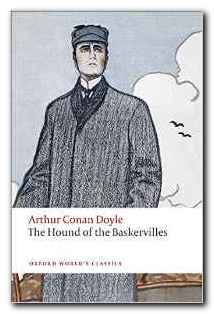


 The novel begins with a scene in which Selden invites her to afternoon tea in his bachelor rooms – an innocent enough gesture, but one which ultimately is to have a decisive influence on her destiny. She is spotted by two people leaving the building, and both of them seek to profit from their knowledge later in the story. Lily mixes amongst people who are much wealthier than she is, and she feel both financially and socially disadvantaged. She entertains the notion of attracting Percy Gryce, a boring but wealthy young bachelor. However, distracted by her interest in Lawrence Selden, she misses her chance to captivate Gryce, and he marries somebody else.
The novel begins with a scene in which Selden invites her to afternoon tea in his bachelor rooms – an innocent enough gesture, but one which ultimately is to have a decisive influence on her destiny. She is spotted by two people leaving the building, and both of them seek to profit from their knowledge later in the story. Lily mixes amongst people who are much wealthier than she is, and she feel both financially and socially disadvantaged. She entertains the notion of attracting Percy Gryce, a boring but wealthy young bachelor. However, distracted by her interest in Lawrence Selden, she misses her chance to captivate Gryce, and he marries somebody else.
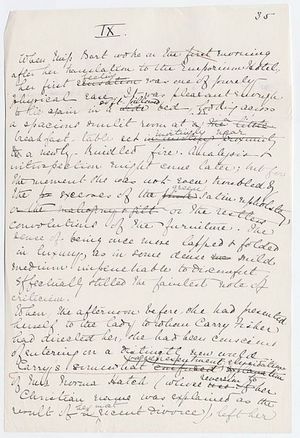
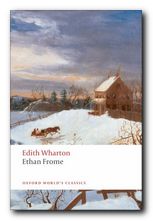 Ethan Frome
Ethan Frome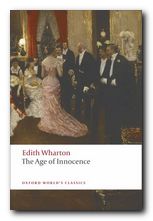 The Age of Innocence
The Age of Innocence The Custom of the Country
The Custom of the Country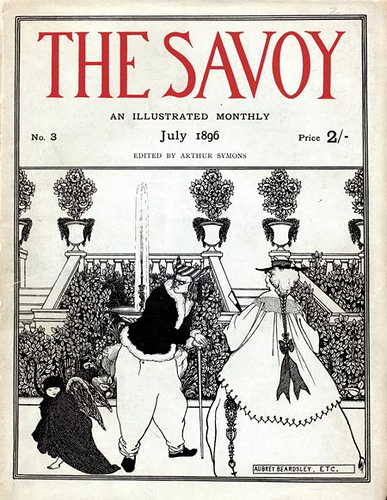


 The Cambridge Companion to Joseph Conrad offers a series of essays by leading Conrad scholars aimed at both students and the general reader. There’s a chronology and overview of Conrad’s life, then chapters that explore significant issues in his major writings, and deal in depth with individual works. These are followed by discussions of the special nature of Conrad’s narrative techniques, his complex relationships with late-Victorian imperialism and with literary Modernism, and his influence on other writers and artists. Each essay provides guidance to further reading, and a concluding chapter surveys the body of Conrad criticism.
The Cambridge Companion to Joseph Conrad offers a series of essays by leading Conrad scholars aimed at both students and the general reader. There’s a chronology and overview of Conrad’s life, then chapters that explore significant issues in his major writings, and deal in depth with individual works. These are followed by discussions of the special nature of Conrad’s narrative techniques, his complex relationships with late-Victorian imperialism and with literary Modernism, and his influence on other writers and artists. Each essay provides guidance to further reading, and a concluding chapter surveys the body of Conrad criticism.
 Lord Jim
Lord Jim Heart of Darkness
Heart of Darkness
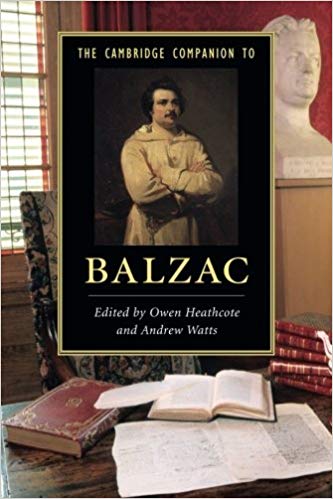


 The Bostonians (1886) is a novel about the early feminist movement. The heroine Verena Tarrant is an ‘inspirational speaker’ who is taken under the wing of Olive Chancellor, a man-hating suffragette and radical feminist. Trying to pull her in the opposite direction is Basil Ransom, a vigorous young man to whom Verena becomes more and more attracted. The dramatic contest to possess her is played out with some witty and often rather sardonic touches, and as usual James keeps the reader guessing about the outcome until the very last page.
The Bostonians (1886) is a novel about the early feminist movement. The heroine Verena Tarrant is an ‘inspirational speaker’ who is taken under the wing of Olive Chancellor, a man-hating suffragette and radical feminist. Trying to pull her in the opposite direction is Basil Ransom, a vigorous young man to whom Verena becomes more and more attracted. The dramatic contest to possess her is played out with some witty and often rather sardonic touches, and as usual James keeps the reader guessing about the outcome until the very last page. What Masie Knew (1897) A young girl is caught between parents who are in the middle of personal conflict, adultery, and divorce. Can she survive without becoming corrupted? It’s touch and go – and not made easier for the reader by the attentions of an older man who decides to ‘look after’ her. This comes from the beginning of James’s ‘Late Phase’, so be prepared for longer and longer sentences. In fact it’s said that whilst composing this novel, James switched from writing longhand to using dictation – and it shows if you look carefully enough – part way through the book.
What Masie Knew (1897) A young girl is caught between parents who are in the middle of personal conflict, adultery, and divorce. Can she survive without becoming corrupted? It’s touch and go – and not made easier for the reader by the attentions of an older man who decides to ‘look after’ her. This comes from the beginning of James’s ‘Late Phase’, so be prepared for longer and longer sentences. In fact it’s said that whilst composing this novel, James switched from writing longhand to using dictation – and it shows if you look carefully enough – part way through the book. The Ambassadors (1903) Lambert Strether is sent from America to Paris to recall Chadwick Newsome, a young man who is reported to be compromising himself by an entanglement with a wicked woman. However, Strether’s mission fails when he is seduced by the social pleasures of the European capital, and he takes Newsome’s side. So a second ambassador is dispatched in the form of the more determined Sarah Pocock. She delivers an ultimatum which is resisted by the two young men, but then an accident reveals unpleasant truths to Strether, who is faced by a test of loyalty between old Europe and the new USA. This edition presents the latest scholarship on James and includes an introduction, notes, selected criticism, a text summary and a chronology of James’s life and times.
The Ambassadors (1903) Lambert Strether is sent from America to Paris to recall Chadwick Newsome, a young man who is reported to be compromising himself by an entanglement with a wicked woman. However, Strether’s mission fails when he is seduced by the social pleasures of the European capital, and he takes Newsome’s side. So a second ambassador is dispatched in the form of the more determined Sarah Pocock. She delivers an ultimatum which is resisted by the two young men, but then an accident reveals unpleasant truths to Strether, who is faced by a test of loyalty between old Europe and the new USA. This edition presents the latest scholarship on James and includes an introduction, notes, selected criticism, a text summary and a chronology of James’s life and times.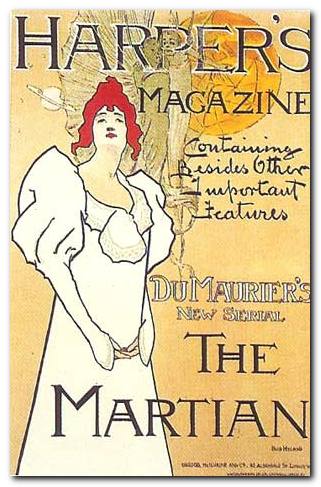
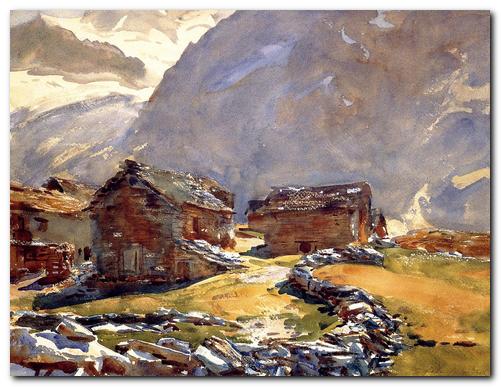
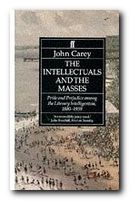
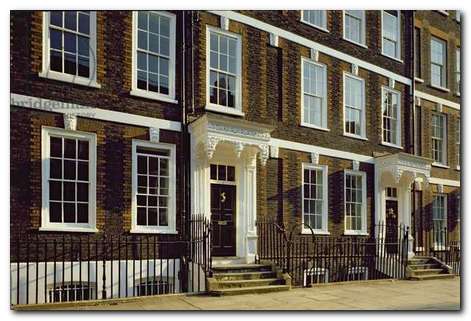

 Orlando (1928) is one of her lesser-known novels, although it’s critical reputation has risen in recent years. It’s a delightful fantasy which features a character who changes sex part-way through the book – and lives from the sixteenth to the twentieth century. Using this device (which turns out to be strangely credible) Woolf explores issues of gender and identity as her hero-heroine moves through a variety of lives and personal adventures. Orlando starts out as an emissary to the Court of St James, lives through friendships with Swift and Alexander Pope, and ends up motoring through the west end of London on a shopping expedition in the 1920s. The character is loosely based on Vita Sackville-West, who at one time was Woolf’s lover. The novel itself was described by Nigel Nicolson (Sackville-West’s son) as ‘the longest and most charming love-letter in literature’.
Orlando (1928) is one of her lesser-known novels, although it’s critical reputation has risen in recent years. It’s a delightful fantasy which features a character who changes sex part-way through the book – and lives from the sixteenth to the twentieth century. Using this device (which turns out to be strangely credible) Woolf explores issues of gender and identity as her hero-heroine moves through a variety of lives and personal adventures. Orlando starts out as an emissary to the Court of St James, lives through friendships with Swift and Alexander Pope, and ends up motoring through the west end of London on a shopping expedition in the 1920s. The character is loosely based on Vita Sackville-West, who at one time was Woolf’s lover. The novel itself was described by Nigel Nicolson (Sackville-West’s son) as ‘the longest and most charming love-letter in literature’. Kew Gardens
Kew Gardens Virginia Woolf
Virginia Woolf